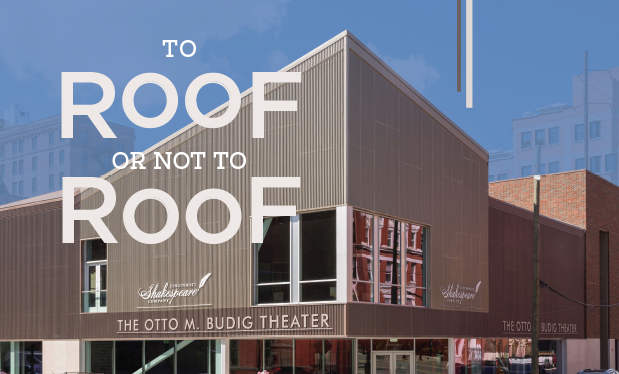First impressions are vital. When growing a client base, roofing businesses often invest significant resources in visual marketing collateral such as truck signage, branded invoices and advertisements to help create positive impressions of their companies.
But they rarely create audio brands, and how your company sounds is just as important as how it looks.
Sound for marketing
Sound is an extremely potent tool for enhancing brand recall and recognition, primarily because hearing is such a powerful, emotional sense. People easily can be transported in their memories to a specific time period or place when hearing a certain sound, triggering a vivid recollection of sights, smells and feelings. Music can be used to excite, motivate or soothe. According to a 2017 study published in the Journal of Alzheimer’s Disease, people with Alzheimer’s disease and dementia cope better with their anxiety after listening to music, which helps to “ground the patient back into reality.”
People also are hard-wired to trust their sense of hearing more than sight. A study conducted as part of the Hearing Body project at the University College London found participants could have their perceptions of their own body images distorted by changes in sound. For example, simply lowering the pitch (frequency of sound) of test subjects’ footsteps made them believe they were heavier than they actually were and believe their steps were more labored.
This translates to businesses. A study published in the Journal of Brand Management found playing slow-tempo, chilled, stress-busting music, such as tracks found in a spa, increases retail sales in low-crowd density 10% whereas in busy environments, loud and upbeat music got people drinking more beer more quickly.
The effectiveness of audio branding also is exemplified by how the theme tune for FOX NFL Football generated anticipation and excitement in fans. According to a 2012 Sonic Brand Study published by Katz Marketing Solutions, 79% of respondents correctly identified the brand through the melody.
Research conducted by PHMG in 2018 shows 67% of U.S. consumers now claim music is more memorable than visuals when used in marketing. Using sound should be a staple in your business marketing mix.
What is audio branding?
Most people will have heard a company’s audio brand without giving it a second thought. Intel®’s five-note jingle, McDonald’s “I’m lovin’ it!” bop, NBC’s chime and Mastercard®’s new sonic logo are unique audio brands that have given those businesses a chance to be recognized in an audio world where podcasts and smart home speakers are on the rise.
Some may believe audio branding only can benefit companies with $1 million-plus in sales. Historically, this may have been the case, but there now are cost-effective ways of creating the perfect brand soundtrack for your business. By far the largest application of audio branding is via phone—something companies of all sizes, including small roofing companies, have in common. The phone still represents a prominent source of inbound inquiries.
A positive caller experience
Calls are key to a roofing company’s success. Whether a customer is inquiring about the cost of a new roof system or requesting help for an emergency repair, the traditional method of picking up the phone offers him or her a fail-safe way of getting information and action fast.
More often than not, a phone conversation is a customer’s first point of communication with an organization. Phone presence is one of the largest determining factors when shaping a company’s perception, so it is important to ensure first-time customers receive positive caller experiences as tarnished first impressions can mean lost leads.
This claim is underpinned by research conducted by PHMG that revealed 59% of U.S. consumers wouldn’t do repeat business with a company if their first call isn’t handled satisfactorily.
Common mistakes that can lead to dissatisfaction include leaving a customer to listen to silence, anodyne panpipes or monotonous beeps while on hold. Even voice and music messages can have a detrimental effect if they are repetitive, poorly designed or provide too little information to keep a caller engaged.
The power of sound
There are clear business benefits to be gained from following a best practice approach to audio branding. Companies that create a powerful audio profile can use it as a key differentiator, helping them stand out in a crowded marketplace and get ahead of the competition.
A company’s branding tells the story of its business. When designing an effective audio brand for your company, approach the process the same way you would approach visualizing your brand. Consider your organization’s values, personality and purpose and then create sounds that accurately depict your company to ensure consistency and avoid misrepresentation.
Brand congruence is crucial, as well. If you create an audio brand that doesn’t fit with your current visual brand, it can result in a disconnect with customers and lead to a decrease in customer confidence and brand loyalty. Instead, consider the existing elements of your visual branding to convey a coherent, consistent brand that clients can trust.
It also is important to choose a specialist who demonstrates a clear understanding of a brand and how it would translate to audio. Often, businesses will use an off-the-shelf production with a generic voice and music track, but this ignores a company’s individuality and can do more harm than good.
Ultimately, it comes down to perceptions associated with the different elements related to voice and music, whether it’s tone, pitch, instrumentation or other variables.
Make sweet music
The right combination of voice, music and script when played over the phone can have a powerful effect on people’s subconscious. Choosing the voice that best represents a business depends on a number of attributes, including gender, age, tone and accent.
To secure business, customers need to know they are dealing with a professional organization that has the skills to take on a job and complete it to a top-class standard. In this context, it is unsurprising that PHMG has found businesses in the roofing industry that successfully incorporate audio branding use a combination of masculine and feminine voices with friendly and assertive delivery styles in their audio brands.
Masculine voices typically are perceived as distinguished and authoritative—ideal for conveying the expertise and competence of a company. On the other hand, a feminine voice is perceived as welcoming and calming, which is perfect for customers calling in stressful situations such as a roof leaking from storm damage.
You may be tempted to follow industry stereotypes and opt for a masculine voice simply because the industry is predominantly male. However, your customer base is wide-ranging. It is more important to consider the unique identity of your brand and develop a sound that fits.
Age also is a factor to consider. An older-sounding voice is generally perceived as more knowledgeable or wise whereas a younger-sounding voice can deliver vibrancy and energy, perhaps reflecting a fresh approach to roofing.
Accent also has a part to play. Roofing companies often cater to a local demographic, so it may be worth using a regional dialect to help connect with a customer on an emotional level. This helps establish a rapport between your clients and your business, providing a sense of reassurance.
Beyond talk
However, voice alone does not work. It also is important to choose the most appropriate music to help reinforce brand characteristics. If voice and music are created in a way that complements each other and reinforces your existing brand image, it can help to differentiate your company from the competition. PHMG research has found 66% of U.S. consumers believe a business sounds more professional if it uses tailored voice and music over the phone. Most of us have called a business, been placed on hold and heard a popular song playing. In theory, it makes sense—a song will entertain callers and prevent them from getting bored while on the line.
Yet it could work the opposite way. How a listener reacts to a song is partly a result of his or her past experiences and whether that tune is associated with a difficult time in his or her life. It could result in negative perception that can be subconsciously associated with a company.
Using a piece of commercial music, no matter how upbeat or positive it may seem initially, is risky. But a bespoke track tailored to your business doesn’t come with pre-existing views.
A PHMG analysis of clients has found a vast majority of roofing companies that successfully use audio branding tend to use traditional instrumentation, opting for a live band setup. Electric and acoustic guitars and solid piano underpinnings are used to create a sense of trust and familiarity. The tracks often have bold, catchy melodic lines to convey a friendly, memorable sound that will help them stand out from their competitors. The tempo is generally upbeat and driven to reflect a fast-paced, timely service and delivery.
Content is king
Alongside voice and music, script also is important as audio branding offers a golden opportunity to advertise your company to an attentive audience.
For example, when customers call a business and are placed on hold, they often are left listening to what is ultimately “dead air”—a space you can take ownership of with audio branding. Instead of silence, your attentive callers can be treated to informative snippets of information, such as promoting your company’s range of services or hours of operation.
The script also can assist with upselling and cross-selling services to help boost sales or make listeners believe they are in capable hands by promoting staff qualifications, business awards or accreditations such as NRCA ProCertification.™
Refresh, retain and resonate
Despite its emotional power, sound feels less intrusive than bold visual advertising and can have a lasting effect on a customer’s subconscious, causing him or her to assimilate marketing messages without even knowing he or she is doing so.
However, one potential pitfall to be aware of is sound fatigue. People simply get bored of hearing things on repeat. Catchy is good; earworms (sticky music, stuck-song syndrome or involuntary musical imagery) are bad.
According to a research abstract published in the European Journal of Neuroscience in 2013, when listening to music, parts of the brain “light up” on functional MRI scans—not just the auditory cortex but also other regions involved in attention, movement, planning and memory. Essentially, we are learning and participating when listening to a new song, but if we keep listening to it on repeat, we no longer are learning and instinct kicks in to find new, more engaging things.
The same goes for audio branding. If customers hear the same content, voice and music each time they call a business, they will simply ignore it and the production becomes meaningless. After a perfect brand soundtrack has been created, it is critical to futureproof the brand sound to keep up with a continually evolving sales landscape.
Just as visual brands age over the years, so does audio, probably even more dramatically. The evolution of Coca Cola’s audio signature from “I’d like to buy the world a Coke” in the 1970s to its festive tune “Holidays are coming” is an example of keeping an audio brand current.
Brand soundtracks should be refreshed whenever there is a visual brand update. Similarly, scripts should constantly evolve to reflect seasonal trends and promotions to ensure the messaging continues to resonate with clients.
Make your company sing
Customers always will be exposed to audio when calling to make an inquiry or when they are physically on your company’s premises, so it is important to ensure what they hear accurately represents your business and its ethos.
From small to large companies, businesses of all sizes can leverage the power of audio branding to cross-sell and upsell in the certain knowledge that how a company sounds is now as important as how it looks.
Daniel Lafferty is director of voice and music at PHMG, Chicago.



